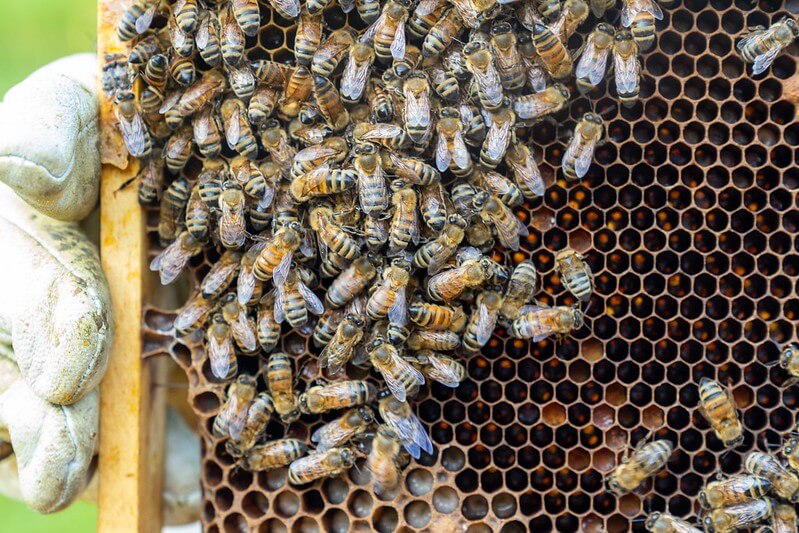The Amazing Honey Bee
Students investigate the three types of honey bees in a colony, identify their roles, and recognize honey bees as part of a community that works together.

Background
Lesson Activities
Recommended Companion Resources
Credits
Author
Michele Melius | Minnesota Agriculture in the Classroom
Acknowledgements
Some of the materials contained in this lesson plan were drawn and adapted from the following sources:
Standards
National Content Area Standards
- Science
- K-ESS3: Earth and Human Activity
- K-ESS3-1: Use a model to represent the relationship between the needs of different plants or animals (including humans) and the places they live.
- 1-LS1: From Molecules to Organisms: Structures and Processes
- 1-LS1-1: Use materials to design a solution to a human problem by mimicking how plants and/or animals use their external parts to help them survive, grow, and meet their needs.
- 2-LS2: Ecosystems: Interactions, Energy, and Dynamics
- 2-LS2-2: Develop a simple model that mimics the function of an animal in dispersing seeds or pollinating plants.
- 2-LS4: Biological Evolution: Unity and Diversity
- 2-LS4-1: Make observations of plants and animals to compare the diversity of life in different habitats.
- K-ESS3: Earth and Human Activity